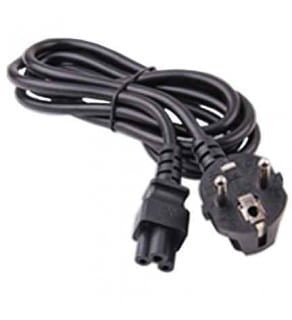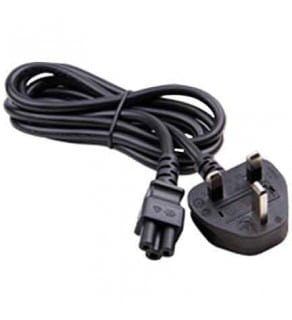110220Volts World Wide Products
Big Sale
Deluxe Automatic Voltage Regulator
Regvolt 1000 Watt Deluxe Automatic Voltage Regulator Converter Transformer
Quantity Discounts
Deluxe Automatic Voltage Regulator
Regvolt 2000 Watt Deluxe Automatic Voltage Regulator, Voltage Converter Transformer (CE Mark)
Quantity Discounts
Sales And Special Offers
Seven Star ST-100, 100 Watts Step Up and Down Voltage Converter Transformer
Sales And Special Offers
Seven Star ST-200, 200 Watts Step Up and Down Voltage Converter Transformer
FEATURED
Quantity Discounts
Quantity Discounts
Quantity Discounts
Quantity Discounts
LATEST
Browse our Categories
Find useful maps and charts for Multisystem TV’s, Voltage 110 and 220, and region free dvd players,
- TV Chart
- DVD
- Region Code free
- Zone Code
- NTSC, SECAM, PAL when it comes to DVD’s
- Voltage Chart
- World wide country plug chart
Get the FULL HD experience from your multisystem LED TV
PAL, SECAM and NTSC
Another characteristic that TV buyers consider is the device’s color quality. Here are three types of color systems that you might come across:
PAL: The PAL system aims to improve upon its predecessors, which is why it has a higher resolution than NTSC and improved coloring over SECAM. PAL also has the ability to keep up with frame rate conversion than NTSC, so watching films will be more fluid.
SECAM: SECAM is one of the early attempts at color television. It is trusty and broadcasts over longer distance, but it isn’t as vibrant or clear as PAL.
NTSC: Most American broadcasts come through the NTSC system. It has a lower resolution than the PAL system. However, color controls allow you to adjust the tint of your screen if it comes through NTSC so that it looks just as bright and vibrant as it should.

There are six (6) television broadcasting regions for which the digital video disc (DVD) was developed.
The world’s television regions are:
Region 1 – USA and Canada
Region 2 – Europe, Japan, the Middle East, North Africa, Egypt, and South Africa
Region 3 – Taiwan, The Philippines, Korea, Indonesia, Hong Kong
Region 4 – Mexico, Central America, South America, Australia, New Zealand, the Pacific Islands, and the Caribbean
Region 5 – Russia, Eastern Europe, India, North Korea, and East and West Africa
Region 6 – China.
World Television Systems and Voltage Guide

Blu-ray zones
Blu-Rays have less strict encryption coding. Chances are, you can play your Blu-Ray DVD in any player, as two thirds of all discs are region-free. The remaining third, however, will fall into one of three regions, which are much more clear-cut than DVD regions:
Region A: North America, Japan, Korea, and Southeast Asia
Region B: Europe, Africa, Australia and New Zealand, the Middle East, and Greenland
Region C: China, India, Russia, Central and South Asia, Bangladesh, Nepal, and Pakistan

TV Types
Another characteristic that TV buyers consider is the device’s color quality. Here are three types of color systems that you might come across:
PAL (Phase Alternation Line) offers 625 lines per second to produce a very detailed image on a wider luminance (color signal) bandwidth. The PAL system has been adopted by almost all of the world’s countries using the 50 hz (cycles) voltage.
SECAM: SECAM is one of the early attempts at color television. It is trusty and broadcasts over longer distance, but it isn’t as vibrant or clear as PAL.
NTSC (National Television Standard Committee), the American broadcast frequency, offers 525 lines per second to produce an image with a faster frame rate, which reduces visible flickering and picture noise.

Voltage Power Worldwide: 110 or 220 Volts
The amount of volts delivered by a socket varies around the world: you’ll find anywhere from 100 to 240 volts. The United States, for example, uses a 120-volt system for electric systems, although much of the rest of the world operates on double that amount. There are arguments in favor of both systems: lower volts are safer and deliver a much softer shock in the case of an accident, while higher voltage is better at powering large electronics. You won’t have a say in the amount of volts that your home delivers, but you will have to consider voltage when you travel: these varying outputs require travelers to carry converters. Click here to see each country’s standard voltage, as well as the type of plug that they use.

The world has many different types of plugs
As you pick up adapters for your next trip, it’s also important to keep in mind that different plugs can also signify a different amount of energy being transferred to your electronic device. For that reason, it’s important to invest in converters as well, which pare down or increase the amount of energy supplied so that your device works properly.
Many people wonder why there isn’t a plug that works internationally, and that has been considered by many countries. However, it would require an infrastructure overhaul — and lots of money — that most countries aren’t willing to spend. So, until the day that the world decides to adopt international plugs or built-in USB adapters that work for all of our chargeable devices, it’s imperative to remember these differences and bring along your converters and adapters on every trip abroad.

If you’ve ever left American soil with any sort of chargeable electronic device, you’ve likely had to go with an adapter to make it fit into another country’s plug — or, you learned the hard way that not everyone uses the two-prong plug that’s so familiar to us in the United States. It turns out that there 14 different plug types, marked A through N, which fit in different places around the world. Before you hit the seas or skies on your next international getaway, find out which of the following plugs you’ll need:
A: North America, Central America, and Japan. The Japan plug is slightly different than the North American one, which allows them to fit into American outlets but not the other way around.
B: North America, Central America, and Japan as well. These plugs include a third cylindrical beneath the top two.
C: Europe, except for the United Kingdom and Ireland; Cyprus and Malta
D: India, Nepal, Sri Lanka, Namibia, and more
E: France, Belgium, Slovakia, Tunisia, and more. It’s designed to fit into F outlets as well, and vice versa.
F: Spain, the Netherlands, Germany, Austria, and more.
G: The United Kingdom, Ireland, Malta, Malaysia, Hong Kong, and Singapore. The UK sockets have shutters in order to prevent foreign objects from being inserted into them.
H: Israel
I: Australia, New Zealand, Papua New Guinea, and Argentina
J: Switzerland and Liechtenstein. Type C plugs can also fit and function in a type J socket.
K: Denmark, Greenland, and more.
L: Italy. The Italian socket will often work with C, E, F, and L plugs as well.
M: South Africa, Lesotho, Swaziland, and more.
N: Brazil and South Africa.
































